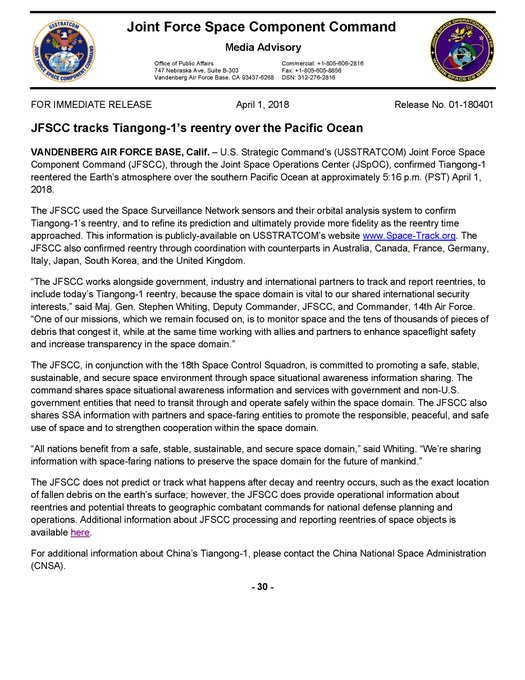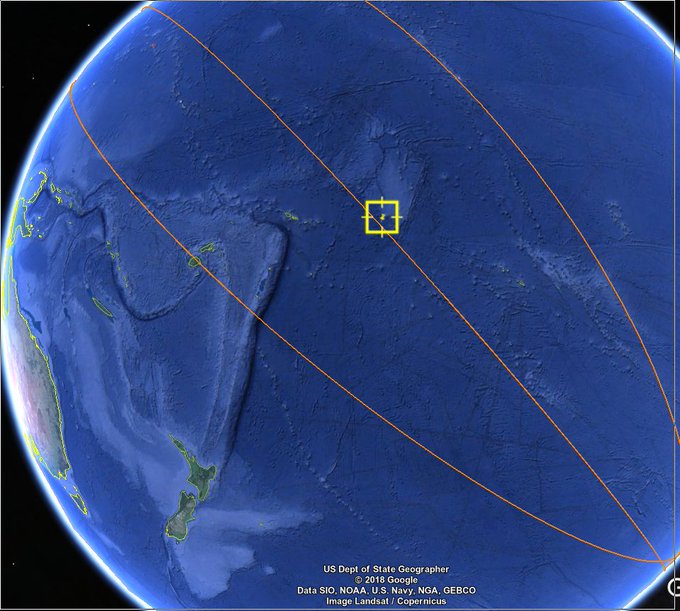Chinese Space Station Crashes Down To Watery Grave In South Pacific
1 April, 2018
China's nine-ton school bus-sized space station, Tiangong-1, has plummeted to a watery grave in the South Pacific ocean - and Michigan residents can come out of their bunkers.
The two-module spacecraft - which means "Heavenly Palace," lost contact with China's space agency on March 21, 2016 after the completion of its extended mission - which included a six year service life that saw two manned missions to perform experiments for the larger multiple-module Tiangong station.
Based on Two-Line Element set data from the Joint Operations Space Center (JSpOC), the last orbital adjustment made by the Tiangong-1 was in December, 2015.
Amateur satellite trackers claim the station has been orbiting uncontrolled since at least June, 2016 (aerospace.org), with the only confident predictions as to where it might hit falling between the 43rd parallels.
The Tiangong-1 was the first space station built and launched by China - equipped with two sleep stations and a habitable volume of 15 cubic meters (529 sq ft.).
***
As we reported earlier, With China's Tiangong-1 space station (translated as "Heavenly Palace") full of highly toxic chemicals such as hydrazine, set to crash into the earth at a still unknown location some time today, Michigan isn't taking any chances - activating emergency operations center to monitor its trajectory.
As a reminder, several weeks ago Aerospace.org predicted that while the list of possible crash sites includes locations in Northern China, South America, Southern Africa, Northern Spain and the United States, lower Michigan in particular is among the regions with the highest probability of a direct hit.







No comments:
Post a Comment
Note: only a member of this blog may post a comment.